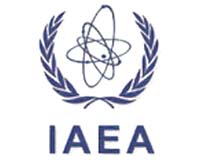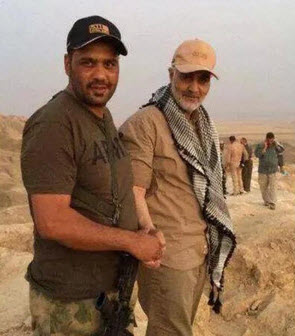August 08, 2014
By Amir Taheri
Iran and the 5+1 group of nations (the five UN Security Council veto powers, plus Germany) tried to create the impression that they were in a cliff-hanger right to the end. Every day, they came out with a tantalizing “we’re almost there” claim.
The latest round of talks in Vienna on Iran’s nuclear program has ended with, guess what, tacit agreement to hold further talks for four more months.
Both Iran and the 5+1 group of nations (the five UN Security Council veto powers, plus Germany) tried to create the impression that they were in a cliff-hanger right to the end. Every day, they came out with a tantalizing “we’re almost there” claim.
Yet the truth is that the very format of the talks makes a meaningful agreement near-impossible, for several reasons.
To start with, it’s not clear who is negotiating with whom and on whose authority.
The 5+1 group is an ad hoc concoction with neither a defined legal status nor a clear negotiating brief. If it represents the Security Council, then what’s Germany doing in it?
And why is the 5+1 team headed by Catherine Ashton, the European Union’s foreign-policy spokesperson? If, on the other hand, the group represents Western democracies, what are Russia and China doing in it?
Also unclear is who appointed this group, and to whom it might report.
Will any agreement be referred back to the Security Council for approval? Or will it represent an international treaty with Iran, and so need approval by the US Senate and the parliaments of EU members plus those of Russia, China and, of course, Iran?
The Security Council has passed six resolutions regarding Iran’s alleged violation of the Nuclear Nonproliferation Treaty, demanding specific action to address the problem — including a demand that Iran stop all uranium enrichment, which violates Tehran’s treaty promises.
Yet the 5+1 has developed its own negotiating brief, behaving as if the UN resolutions were small print that could be ignored.
Believe it or not, at no point has 5+1 come out with a clear statement of what exactly it wants Iran to do. Over the years, the group has shifted position, bending backward to cajole the mullahs into agreement, any agreement — and failed.
Here is how Alaeddin Broujerdi, chairman of the National Security Committee of the parliament in Tehran, put it last Thursday:
“Ten years ago we begged them to let us have two centrifuges for research purposes, but they said we couldn’t even have that. Today, we have 19,000 centrifuges enriching uranium and they beg us not to build more.”
At the start of the latest round, the 5+1 was demanding that Iran fix its enrichment ceiling at 5 percent. When the talks ended Friday, the 5+1 was demanding that Iran enrich “only” up to 20 percent, but at a slower pace.
Initially, 5+1 was asking that Iran close nuclear installations at Fordo and Arak. By last week, that had fallen to a plea that Iran refrain from building five new enrichment facilities.
The 5+1 isn’t even a coalition of the willing.
• Russia joined the scheme to gain a say in Washington’s policy on Iran. President Obama can keep repeating his “all-options-on-the-table” mantra, but as long as the talks continue only one option remains: more talks. And that is what Russia wants.
• China, still unable to decide what role to claim in global politics, is using 5+1 to heighten its profile on the cheap.
• For Germany, 5+1 is a parallel Security Council in which it gets to punch at its weight. In any case, successive German foreign ministers have made it clear that they believe Iran is getting a rough deal from “the Americans.” Official German reports assert that Berlin doesn’t believe Iran is seeking nuclear weapons.
That Russia and China are more interested in 5+1 as a symbol rather than a tool of conflict resolution was highlighted by their decision to walk out of the final phase of the Vienna talks, leaving Iranians alone with the Americans and Europeans.
Not that the Europeans allies are united on Iran, either. The Brits used the Vienna talks as an opportunity to upgrade relations with the mullahs and dispatched a parliamentary mission to Tehran. The French sent high-ranking diplomats plus a score of businessmen looking for deals.
At the end of the Vienna round, the key remaining difference was clear: 5+1 accepts Iran’s right to enrichment but at a slower pace so that, if and when Tehran decides to build a bomb, it would need 12 to 18 months.
Iran, for its part, insists on a faster pace so that it could build a bomb within weeks.
Paradoxically, the relaxation of sanctions in the last six months has eased the pressure on Iran’s economy, making it less urgent for the mullahs to offer any concessions.
To sweeten the extension, the United States has agreed to transfer a further $2.9 billion to help cash-starved Iran, while Tehran claims Washington has promised not to introduce fresh sanctions before the next round of talks.
Four months from now, and with Obama lobbying against any new US sanctions, the mullahs will be even less inclined to change course.
A decade ago, the demand was “no bomb for Iran.” Today, the demand is for slow-motion bomb-making. What might be the position come November, when Obama may need an agreement, any agreement, to claim some sort of foreign-policy success?
Amir Taheri was the executive editor-in-chief of the daily Kayhan in Iran from 1972 to 1979 and has been a columnist for Asharq Al-Awsat since 1987.

















